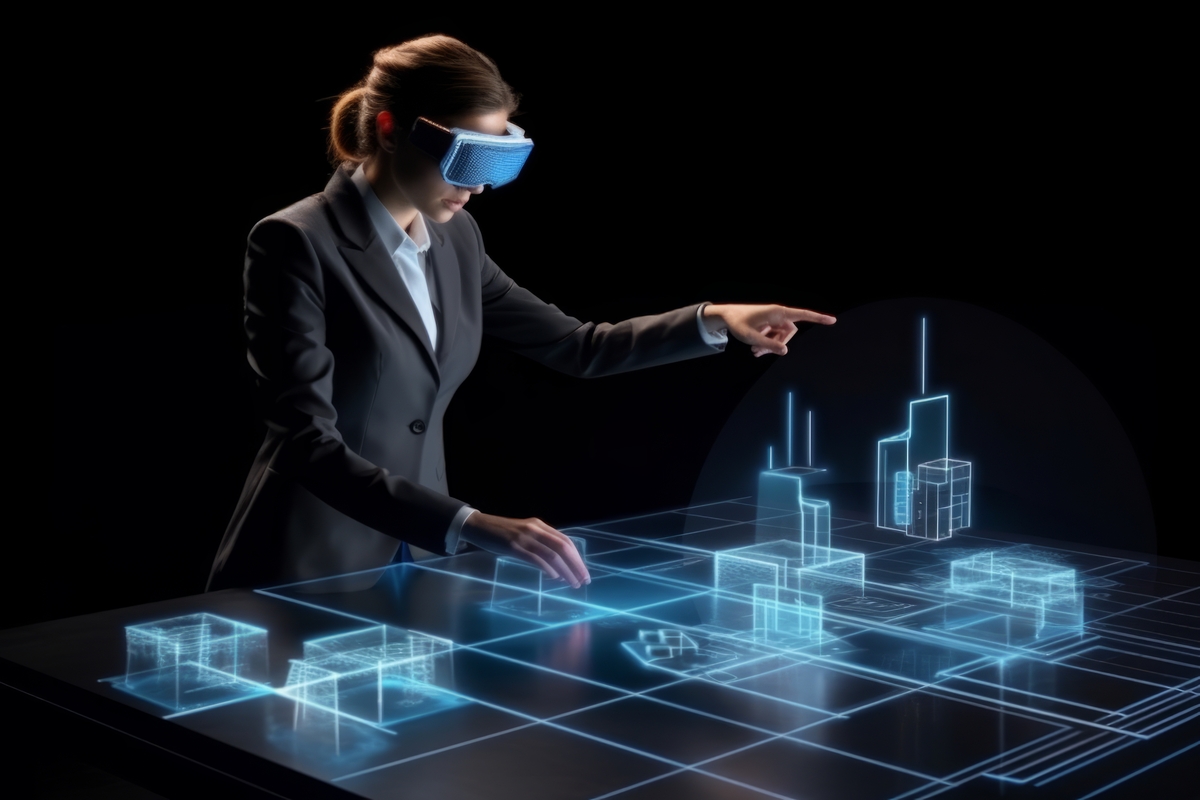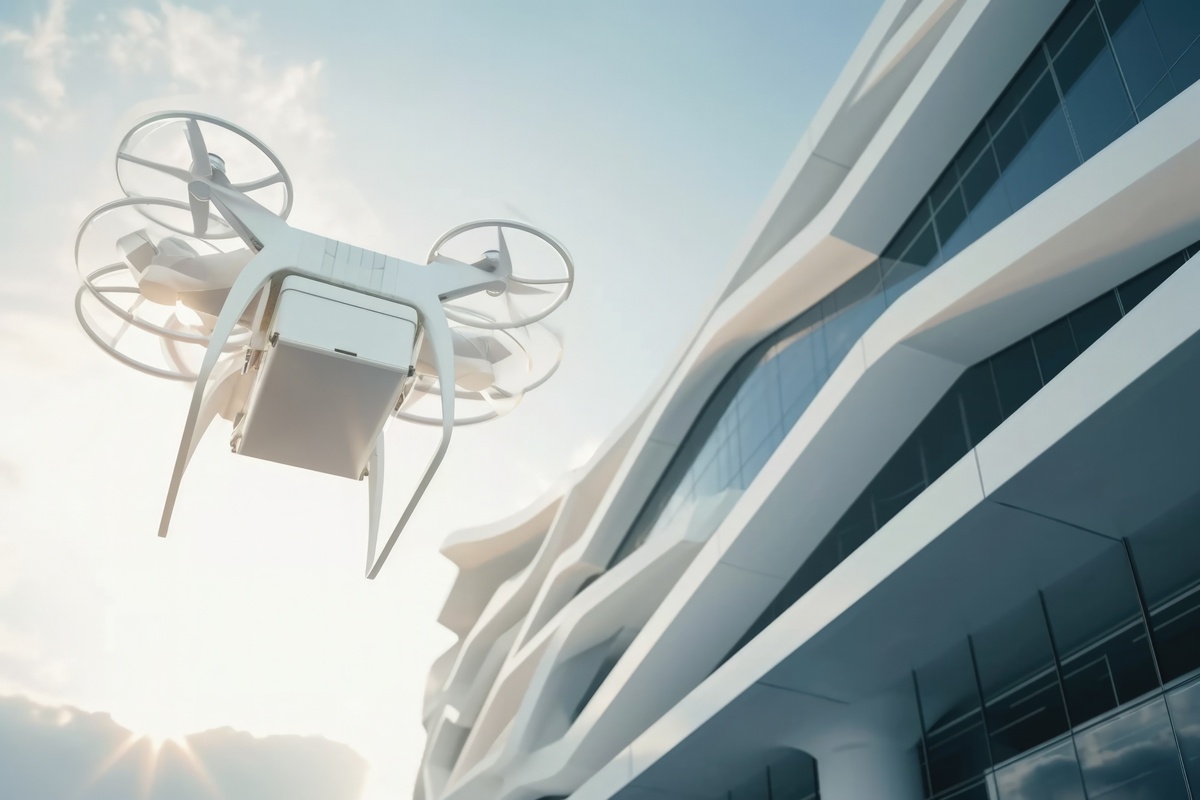As data-driven technologies progressively impact the planning, designing, and execution of projects, the construction sector is seeing a significant upheaval. Data-driven construction is opening the door to more intelligent, effective, and environmentally friendly methods. The incorporation of data into building processes is increasing project schedules, safety, and cost-effectiveness, from the application of artificial intelligence (AI) and machine learning (ML) to developments in Building Information Modeling (BIM) and Internet of Things (IoT) applications.
Data-driven construction allows workers to anticipate possible problems, make better decisions, and use resources more efficiently. Data-driven construction solutions are becoming increasingly important as the industry develops, creating new chances for advancement and creativity. The top ten themes that are influencing construction’s future and propelling the sector toward increased productivity and sustainability will be discussed in this article.
Table of Contents
10 Data-Driven Construction Trends Shaping the Future
1. Artificial Intelligence (AI) for Predictive Analytics in Construction
With predictive analytics in particular, artificial intelligence is quickly emerging as a major force in the construction sector. Artificial intelligence (AI) systems can forecast possible project delays, cost overruns, and safety hazards by examining past data. By taking preventive steps, contractors may minimize waste and optimize resource allocation thanks to these forecasts. AI-based systems, for instance, can predict the need for equipment maintenance, save downtime, and increase project efficiency overall. Construction projects will become safer and more affordable as AI technologies develop because of their capacity to expedite decision-making.

2. Internet of Things (IoT) for Smart Construction Sites
The management of building sites is being transformed by the Internet of Things (IoT). Real-time data on the workplace, tools, and employees is gathered via Internet of Things devices like wearables and sensors. After then, this data is examined to track equipment utilization, keep an eye on safety conditions, and improve processes. Wearable technology, for instance, can notify employees of hazardous situations, lowering the possibility of mishaps. Smart construction sites powered by IoT increase efficiency, boost security, and guarantee that projects are completed on schedule.
3. Construction Wearables for Safety and Productivity
On building sites, wearable technology is becoming more and more significant. Real-time health, location, and safety monitoring is possible with smart helmets, vests, and safety glasses. These wearables can quickly notify employees and managers when they notice symptoms of exhaustion, exposure to dangerous substances, or dangerous situations. Businesses may increase productivity and safety while lowering accidents and delays by combining data-driven construction from wearable devices with other site management solutions.
4. Building Information Modeling (BIM) 2.0: The Future of Construction Design
For almost twenty years, Building Information Modeling (BIM) has revolutionized the building industry. BIM is developing into BIM 2.0, a collaborative platform with greater data. Improved 3D visuals, real-time collaboration capabilities, and data integration across the project lifecycle are all included in this latest version. Better cooperation between contractors, engineers, and architects is made possible by BIM 2.0, which also improves project deadlines and lowers errors. To improve decision-making, the model may now incorporate a wide range of variables, such as building costs, energy performance measures, and material sustainability statistics.

5. Cloud-Based Construction Project Management Platforms
Construction project management is increasingly being handled via cloud-based project management tools. All stakeholders may work together in real time, access the most recent information, and monitor project progress from any location thanks to these platforms. Cloud-stored data can be examined to find bottlenecks, evaluate project schedules, and verify regulatory compliance. Large-scale project management is becoming more economical and efficient for construction companies thanks to cloud solutions.
Suggested article to read: Top 8 AI in Project Management Case Studies (2024)
6. Data-Driven Construction Sustainability
The construction sector is increasingly focusing on sustainability, and adopting more sustainable practices is largely dependent on data-driven construction solutions. Data is assisting construction professionals in minimizing the environmental effect of their projects through sustainable material selection and energy-efficient designs. While BIM and AI help improve energy use during building operations, predictive analytics enables businesses to assess the long-term environmental impact of construction decisions. Energy-efficient, environmentally friendly building design, construction, and operation are made simpler by these technologies.
7. Robotics and Automation for Efficient Construction
Construction jobs that need a lot of work are being transformed by automation and robotics. These days, robots perform jobs like pouring concrete, laying bricks, and 3D printing building parts. These technologies increase safety, decrease human error, and speed up building. Construction sites are also seeing an increase in autonomous machinery and cars, which further automates work and lowers personnel expenses. Efficiency gains and cost reductions in the construction sector will be substantial as automation technology advances.

8. Augmented Reality (AR) and Virtual Reality (VR) for Enhanced Collaboration
Because AR and VR technologies offer immersive ways to view projects before they are completed, they are quickly becoming essential to the construction sector. AR improves design accuracy and construction planning by allowing teams to superimpose digital models onto real-world areas. Through immersive experiences that improve decision-making and cooperation, virtual reality (VR) enables stakeholders to walk through virtual models of buildings. By bridging the gap between design and construction, these technologies are guaranteeing that projects are carried out exactly as planned.
9. Smart Contracts for Streamlined Project Execution
Blockchain-powered smart contracts are becoming more popular in the building sector. By eliminating the need for middlemen and guaranteeing that projects run successfully, these self-executing contracts automatically initiate payments or take other activities when predetermined criteria are fulfilled. Smart contracts improve accountability and transparency by incorporating data-driven construction insights from project management tools, which lowers disagreements and delays.
10. Drones for Surveying and Site Monitoring
The usage of drones for surveying and monitoring building projects is growing. Project managers can monitor progress and see possible problems early thanks to their real-time aerial images. Large areas can be swiftly scanned by drones fitted with high-resolution cameras and sensors, producing 3D models and intricate topographic maps. This lowers errors and enhances project planning by enabling construction teams to make well-informed decisions. By eliminating the need for workers to enter hazardous or difficult-to-reach regions, drones help improve safety.

Conclusion
The construction industry is expected to increase its use of data-driven construction technology leading to notable improvements in project safety, sustainability, and efficiency. More robust infrastructure and smarter building solutions are being made possible by the expanding application of AI, machine learning, and IoT in the construction industry. To fully realize the potential of data-driven construction, however, issues including data protection, the requirement for specialized personnel, and the incorporation of new technology must be resolved.
Construction companies that adopt these advances will be better positioned to remain competitive in a market that is changing quickly. The sector is moving toward a more digital future. The construction sector can use data to create a more efficient and sustainable future by encouraging cooperation, making technological investments, and making sure that its workforce is prepared.
FAQs
What is data-driven construction?
- Answer: The term “data-driven construction” describes how cutting-edge technologies and data analytics are used to make better decisions, increase productivity, lower costs, and improve safety during the building process.
How does Building Information Modeling (BIM) benefit construction?
- Answer: Through the creation of a digital representation of the project’s functional and physical qualities, BIM improves collaboration, lowers errors, and expedites the planning and execution of building projects.
How can AI improve construction project outcomes?
- Answer: Through the use of predictive analytics to foresee risks, optimize resource allocation, and enhance safety and efficiency on building sites, artificial intelligence (AI) enhances construction outcomes.
What are the advantages of using drones in construction?
- Answer: Drones promote safety by lowering the need for workers to enter dangerous locations, improve site monitoring, improve surveying accuracy, and offer real-time aerial views.
What is the role of wearables in data-driven construction?
- Answer: By tracking location, health, and environmental factors, wearable technology in construction enhances worker safety, reduces the risk of accidents, and boosts total output.
Suggested article for reading:
8 Essential Predictive Analytics Tools for Construction
10 Essential Steps for Conducting a Net-Zero Carbon Assessment
6 Strategies for Net-Zero Waste Management in Construction Sites
A Comparison of 5 Net-Zero Certifications: LEED, BREEAM, and More
Analyzing the Outcomes of COP29: Successes and Areas for Improvement
5 Case Studies of Predictive Analytics in Architecture for 2024
Resources:
- Jones, K., & Patel, S. (2023). “Wearables and Safety in Construction.” Construction Safety Journal.
- Kramer, P., & Martin, L. (2023). “Data-Driven Sustainability in Construction.” Environmental Construction Review.
- Liu, Y., & Chen, H. (2023). “Cloud-Based Project Management in Construction.” International Journal of Project Management.
- Miller, T., & Kahn, R. (2023). “Smart Contracts in the Construction Industry.” Journal of Digital Construction.
- Nash, M., & Perry, F. (2023). “Automation and Robotics in Construction.” Robotics and Construction Journal.
- Smith, J., & Garcia, D. (2022). “The Impact of Drones on Construction Practices.” Aerospace Engineering Journal.
- Wang, J., & Zhang, L. (2023). “BIM 2.0 and Its Applications in Modern Construction.” Journal of Civil Engineering and Architecture.
For all the pictures: Freepik



